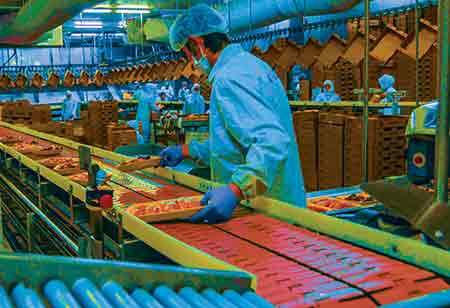Thank you for Subscribing to Food Business Review Weekly Brief
- Home
- Topics
- Alternative Proteins and Plant Based Food
- Beer and Wine
- Canned Beverages
- Coffee And Tea
- Food and Beverage Consulting
- Food and Beverage Financial Service
- Food And Beverages Marketing
- Food Distributors
- Food Ingredients
- Food Sustainability
- Plant Based Food and Beverages
- Seafood Suppliers
- Supplement Manufacturing
- Wine Investment
- News
- Vendor Viewpoint
- CXO Insights
- Conferences
- Newsletter
- CXO Awards
-
The Impact of Technology on Food Safety Testing

By
Food Business Review | Wednesday, March 02, 2022
Stay ahead of the industry with exclusive feature stories on the top companies, expert insights and the latest news delivered straight to your inbox. Subscribe today.

To combat food fraud, chemical and microbiological testing are crucial instruments; new technology may complement these tools and accelerate the speed of results.
FREMONT, CA: Utilizing various technologies and techniques, food safety testing determines the risk factors connected with the ingestion of a food item. Government-sponsored agencies frequently conduct food safety testing to protect the public's health. These agencies verify that food products comply with the country's food safety rules.
Due to customers' increasing reliance on global supply chains, food products can get tainted at nearly any step in the production and distribution cycle, creating more significant health concerns. National authorities worldwide and essential players in the food business are compelled by these and other causes to require improved and more effective monitoring of the safety of food items and enhanced testing to assist reduce consumer health hazards.
A recent data study by the ESOMAR-accredited market research and consulting firm Food Testing Services Market estimates the market size to be $20 billion with a CAGR (compound annual growth rate) of 8.5% from 2022 to 2032. In addition, it is anticipated that the market size will reach $30 billion by 2032.
Consumers' growing concern with food safety is the primary market driver
The rising risk of foodborne illness, adulteration, and toxicity has increased the demand for food testing services. Each year, one in ten persons contract a foodborne illness, with children under five being the most susceptible. The World Health Organization (WHO) estimates that roughly 450,000 people die annually from consuming tainted food. These factors emphasize the necessity for heightened attention and the construction of additional food-safety facilities.
Increasing consumer interest in food quality and technical improvements are driving industrialized nations' food testing services industry. Through safety certifications and compliance, food processing industries and food service businesses are winning consumer trust.
Increased public interest in food safety and quality issues, the capacity to rapidly share these issues via social media, and rising regulatory resources, such as the Food Safety Modernization Act (FSMA), are elevating testing's significance.
Meat, dairy products, processed foods, cereals, and grains are just a few foods that are subjected to food testing.
Methodological improvements in chemical testing
As scientists and researchers uncover more effective and less time-consuming procedures and technologies, the quantity and variety of chemical and microbiological approaches suitable for food safety testing will continue to increase.
Innovative testing tools with the speed, sensitivity, and selectivity to assess several substances in a single test run are advancing the identification of chemical pollutants. In addition, sample preparation techniques such as QuEChERS (Quick, Easy, Cheap, Effective, Rugged, and Safe; pronounced 'catchers') do not require pre-concentration processes and minimal extract cleaning.
These characteristics make QuEChERS-based preparations easier to automate and have contributed to its status as the technique of choice for the chemical evaluation of pesticide residues in fruits and vegetables. In addition, testing additional pollutants, such as antibiotics and chemicals found in a wide variety of food matrices, such as meat, fish, and wine, has developed significantly.
Simultaneously, advancements in gas chromatography, high-resolution mass spectrometry instruments, and the development of corresponding software tools have demonstrated considerable promise. This enables its usage in food testing laboratories for non-targeted testing and identifying known and unknown chemical contaminants and environmental pollutants in the food supply chain.






